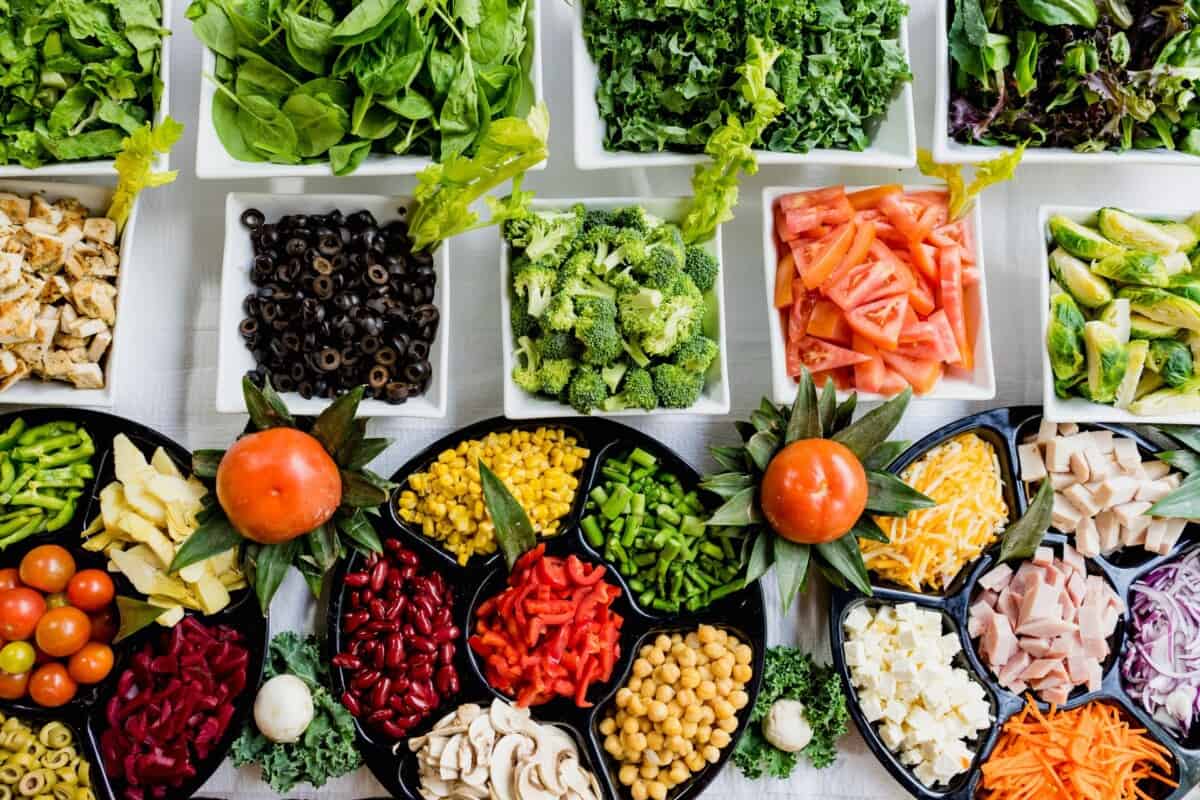The world of nutrition and dietetics offers multiple dietary patterns to the people, each with a specific group of health significance. The basic dietary patterns followed by people are vegetarian diet, vegan diet, and non-vegetarian diet.
There are several benefits of vegetarian diet and the most important benefit is its efficiency for weight management. But people enjoy animal products and they also contain some of the rare nutrients.
Hence, Dietician Dawn Jackson Blatner gave the concept of Flexitarian diet to the world. Flexitarian is the combination of two words i.e. ‘flexible’ and ‘vegetarian’.
The flexitarian diet allows the people to savor the health benefits of vegetarian diet but at the same time they are also allowed to consume moderate amounts of animal products. Thus, flexitarians are neither vegetarian nor vegan.
This type of diet is best for the people who desire to increase the amounts of plant based foods in their diet without cutting off the animal based foods like meat, eggs, honey, etc. entirely.
Principle of Flexitarian Diet
The Flexitarian diet is based on following principles:
- Inclusion of higher amount of whole grains, fruits, vegetables and other plant based foods
- Consumption of protein sourced from plants rather than animals
- Incorporation of flexibility by including meat in the diet at regular time intervals
- Consumption of natural food products over the processed and refined ones
- Limited consumption of salt and sugar
This diet speaks least about restrictions. Rather it focuses on the amount of plant and animal based products. Thus, people find the flexitarian diet appealing and they mostly choose this diet for healthy eating.
Dawn Jackson Blatner have mentioned about the amounts of meat that can be incorporated in the flexitarian diet per week in her book. But there are no specific recommendations to be followed. People can choose the amount of meat flexibly.
Ultimately, the goal of flexitarian diet is to consume higher amounts of plant based nutritious food and less meat (except fish). Thus, the people following flexitarian diet are referred to as “meat reducers” who do not consume meat every day as the “meat eaters”.
The flexitarian diet is also termed as “semi vegetarian” or “demi vegetarian” diet as the meat intake is reduced or restricted for at least three days in a week.
This diet is rich in all the macro as well as micro nutrients. The following article will give you a detailed view of Flexitarian diet right from its theory to its health benefits and its effects on environment.

How Does The Flexitarian Diet Work
A flexitarian adds all the five food groups i.e. whole grains, dairy products, fruits & vegetables, spices & fats, and the “new meat” that includes the meat as well as non-meat protein sources like eggs, legumes & beans. No food group is eliminated.
Batler in her book “The Flexitarian Diet” mentions that the maximum source of protein in flexitarian diet regime must come from the vegetarian staples like quinoa, legumes, pulses, veggies and tons of other vegetarian products. Although meat is not forbidden in this diet, it is not to be consumed as “lazy vegetarians”. The meat consumption is to be reduced gradually. Batler has given following tips for the beginning and later adaption to the flexitarian diet:
- Beginner Flexitarian: Consume meat for 5 days a week and skip for the rest of the two days. The total intake of meat per week must not exceed 26 ounces.
Reference: A portion of chicken or steak measuring to the size of a card deck counts up to 3 ounces and if its thickness and size resembles your palm (including your fingers), then measure it as 4-6 ounces
- Advanced Flexitarian: Cut down the meat intake to 18 oz per week and restrict the meat intake for 3-4 days per week i.e. follow vegetarian diet for half a week and include meat in the diet for other half.
- Expert Flexitarian: Follow vegetarian diet for 5 days per week and consume a total of 9 ounces of meat in the remaining 2 days of the week.
Batler has also set out simpler guidelines for beginning with and adapting to the Flexitarian dietary regime. They are as follows:
| Level of Flexitarianism | Guidelines | |
| Number of meatless meals per week | Total meals in a week | |
| Beginner | 6-8 | 21 |
| Advanced | 9-14 | 21 |
| Expert | More than 15 | 21 |
One of the ways for adapting the flexitarian dietary habits is to stick to a five week meal plan that suggests recipes that include high amounts of vegetarian foods and limited meat. Here you are allowed to switch the recipes but you cannot repeat a single recipe in the period of those five weeks.
As the amount of red meat is reduced, flexitarians need to consume vegetarian products that are rich in iron to keep away from the iron deficiency disorders. Similarly, the vegetarian sources rich in all the micro as well as macro nutrients are recommended for consumption in order to prevent any nutrient deficiencies and malnutrition.
An exercise routine that suits your body is essential to get maximum benefit from this diet.
Health Benefits of Flexitarian Diet
The flexitarian diet was ranked third among the 41 diets by U.S. News and World Report in 2019. Studies show that flexitarian diet aids in weight loss, maintains the blood pressure to normal, and subsides the risk of cardiovascular diseases.
Flexitarians get the health benefits of both vegetarian and non-vegetarian diet. The vegetarians or vegans suffering from micronutrient deficiencies can improve their health through animal based sources of micronutrients. Similarly, the people following non-vegetarian diet can adopt a healthier lifestyle by relishing the health benefits gained through vegetarianism without going anti-meat.
Moreover, the antioxidant rich vegetarian diet improves the immunity and reduces the risk of lethal lifestyle disorders and cancer.
The major health benefits of the flexitarian diet are as follows:
Aids In Bringing The BMI To Normal
As the major portion of meat is replaced by plant based products in this diet, flexitarians tend to reduce their calorie intake by 300kcal per day as compared to the meat-eaters.
According to the RDN, Keri Gans, the author of “The small change Diet from New York City”, the plant based food products like whole grains, pulses, legumes, nuts, fruits and vegetables gives satiety and keeps you full for longer time. This will also contribute to reduced calorie intake. This will result in bringing your waistline measurements to normal.
Studies have also proved that vegans tend to lose weight faster as compared to vegetarians, and the vegetarians can beat omnivores in this matter. As the flexitarian diet is somewhat similar to vegan and vegetarian diet, it efficiently helps in weight loss.
The daily calorie intake for ideal flexitarian diet plan can be nearly up to 1500kcal. The distribution of these calories can be done as follows:
- Breakfast – 300kcal
- Lunch – 400kcal
- Dinner – 500kcal
- Snacks – 150kcal (two times a day)
The calorie intake can be balanced according the age, sex, body composition, height, and weight.
Reduced Risk Of CVD
As mentioned above, flexitarianism can help lose weight and combining exercise with this diet helps to reduce the waist-to-hip ratio. This reduces the risk of cardiovascular diseases.
Animal foods are high sources of cholesterol. Deposition of extra cholesterol in the arterial lumen leads to several heart diseases. But Flexitarianism incorporates adequate dietary fibers along with essential fats from plant based food sources in the daily diet. This improves the heart health.
A study presented in the meeting of the American Heart Association in 2015 has shown that the semi-vegetarian diet lowered the risk of CVDs and strokes among the people. Researchers have also discovered that replacing specific portions of meat in the diet with plant-based products improves the heart health.
There have been lesser evidences about the effect of flexitarian diet on blood pressure. But as the diet helps in reduction of obesity, it also has an indirect effect on the regulation of blood pressure.
Reduces The Risk Of Insulin Resistance And T2DM
A study published in the Journal of the American College of Nutrition shows that vegetarianism is more effective over the diabetes-friendly diet in reducing the risk of Type 2 Diabetes Mellitus.
One of the causes behind development of Insulin Resistance in the body is the fat that is stored in the muscles. When people go for a vegetarian pattern of diet, they are likely to lose this fat. This results in lower risk of insulin resistance and type 2 diabetes mellitus.
Obesity/ higher BMI is also a major cause of type 2 diabetes and insulin resistance. Adapting the flexitarian pattern of diet results in lower BMI and thus prevents your body from such lifestyle disorders.
Cuts Down The Risk Of Cancer
Plant based food sources like fruits, vegetables, nuts, oilseeds, whole grains, pulses, and legumes are rich in antioxidants and nutrients. Antioxidants are the substances essential for neutralization of the toxins produced in the body. They strengthen the immune system of the body. A strong immune system is capable of fighting the development of cancerous cells and thus prevents the proliferation of such cells.
Researchers have also proved that vegetarians are at lower risk of cancer as compared to the non-vegetarians especially in terms of colorectal cancer. Studies have also shown that flexitarians or semi-vegetarians have 8% lower risk of cancer as compared to the non-vegetarians.
Enhances The Quality And Quantity Of Life
As mentioned above, plant based foods are rich in antioxidants, dietary fibers, essential fats, and other nutrients that result in a stronger immune system and a healthier body. Few portions of meat incorporated in the flexitarian diet pattern improve your micronutrient profile. Collectively, the both the foods improve the quality of life.
As the body gets enough antioxidants, the process of aging is slowed down. Moreover, the body experiences a sound state of health. Several studies have shown that the life of flexitarians is 3.6 years more than the non-vegetarians.

Impact Of Flexitarian Diet On Environment
A complete vegetarian diet is less environment friendly as compared to the semi-vegetarian diet. The flexitarian diet includes some portion of meat that is proved to lower carbon footprint as compared to the vegetarian diet that allows animal products like dairy and eggs.
A research conducted by Johns Hopkins University, Baltimore in America has studied the diets prevalent in more than 140 countries. This study shows that people who opt for vegetarianism are possibly doing more harm to the environment. The people who include some portion of meat in their diet contribute to lesser carbon dioxide emissions than the vegetarians.
According to the opinion of Dr. Keeve Nachman, the author of this research paper, the people who include a portion of meat along with dairy, eggs, and remaining portions of plant based foods reduce the greenhouse gas emissions as compared to the strict vegetarians who eliminate meat from their daily diet.
Moreover, this study also says that the global meat production needs to be slowed down in order to bring a climate change for better control. Certain meat production processes especially the production of beef includes deforestation for creating grazing lands for the animals.
This further has a negative impact on the environment. Thus, incorporation of beef as a portion of meat in the daily diet can deteriorate the health of planet earth.
The animal agricultural practices are contributing 40% more to global warming as compared to the transportation industry in the world. Reducing meat intake can indirectly contribute in reduction og global warming.
A research conducted in 2018 by the scholars of Oxford University showed that production and consumption of plant based products has lower environmental impact as compared to that of animal based products.
Thus, flexitarian diet results in a moderate level of greenhouse gas emission along with the reduction in carbon footprint and global warming.
What makes a flexitarian diet easier to follow
Shifting to flexitarian diet from non-vegetarian diet is easier due to the following factors:
- Cost of the edibles: The vegetarian fresh produce is costly but the price is lower than the meat products. Thus, going flexitarian will help you keep your pocket fuller for a longer time.
- Easy cooking and storage: Vegetarian products are easy to store and they can be stored for a longer time as compared to the meat products. Moreover, it is easy to cook vegetarian products as the meal preparation involves lesser cooking time. Moreover, the spices used in cooking plant based foods are relatively lower as compared to the amounts used in cooking meat.
Health Risks Of Flexitarian Diet
Flexitarian diet and other well planned plant based diet can be very healthy on one side but on other side some people may face micronutrient deficiencies when they reduce the portions of meat in their diet. The list of micronutrient deficiencies faced by Flexitarians is as follows:
Vitamin B12
It is present only in animal products and in trace amounts in vegetarian food products. Human gut microbiota can produce vitamin B12 to a certain extent. Studies conducted so far have shown that almost all vegetarians are at the risk of vitamin B12 deficiency as they have zero meat intakes. But as flexitarians have a low intake of meat, they may need supplementation for maintaining adequate levels of vitamin B12.
Mineral Deficiencies
Zinc, Iron, and Calcium: The minerals like iron and zinc are best absorbed from the non-vegetarian sources of food. Flexitarians have a low animal food intake and thus the mineral stores of the body are to be replenished through plant based sources of zinc and iron. If your flexitarian routine does not include enough plant based sources for these minerals, you are likely to suffer from the deficiencies related to those. The flexitarians who limit dairy can suffer from calcium deficiencies if they do not consume enough plant-based sources of calcium.
Fatty Acid Deficiency – Omega-3 Fatty Acids
When you are limiting the portions of meat being a flexitarian, it is essential to choose meat sources that give you adequate essential fatty acids. Choosing the meat rich in unhealthy fats can result into deficiency of essential fatty acids in the body which in turn increases the risk of obesity and CVDs.
Vitamin D
Limited plant based food items contain vitamin D in a trace quantity. Vitamin D can be obtained from animal sources and it can also be synthesized by our body in the presence of gentle sunlight. Reducing the consumption of meat may sometimes lead to vitamin D deficiency that can weaken the immune system.

Foods that can be included in Flexitarian diet
Flexitarians can include all the plant sources of food along with restricted amount of meat. The list of foods that can be included in a flexitarian diet is as follows:
| Food category | Food ingredients |
| Plant based protein sources | Legumes, Pulses, Tofu, Soyabean |
| Animal based protein sources | Lean meat, wild caught fidh, eggs, organic or pasture-raised poultry |
| Dairy products | Milk and milk products obtained from pasture-raised animals |
| Plant based dairy alternatives | Almond milk, soy milk, cashew milk, coconut and its products, hemp |
| Vegetables | Starchy – Green peas, maize, sweet potato, Winter squash Non-starchy – Green leafy veggies like spinach, amaranth, coriander, fenugreek, etc., Beans, roots like carrot, radish, etc., kale, cabbage, cauliflower |
| Whole grains | Millets, buckwheat |
| Nuts and oilseeds | Avocado, Almonds, Cashew nuts, Walnuts, Hazel nuts, Chia seeds, Flax seeds, sunflower seeds, watermelon seeds, olives, peanuts, coconut fats |
| Spices and herbs | Turmeric, cumin, cardamom, clove, ginger, thyme, rosemary, mint, basil, oregano |
| Fruits | Berries, cherries, apples, citrus fruits, watermelon, muskmelon, mango (in moderation) |
| Beverages | Coffee, tea, fruit or vegetable infused water, pure water |
| Fortified foods | Nutritional yeast |
| Supplements (as per the advice of your doctor or dietician) | Iron, calcium, vitamin B12, omega-3 fatty acids |
| Vitamin C rich foods (for better iron absorption) | Broccoli, Citrus fruits, green veggies like spinach |
Consumption of ample plant based sources of calcium and omega-3 fatty acids is also recommended for flexitarians
Foods to be restricted/ reduced in Flexitarian diet
It is now clear that the meat and animal products are to be consumed in a limited proportion while following this diet. Flexitarians need to minimize the consumption of following foods while following this diet regime in order to get the maximum benefits:
| Food category | Food ingredients |
| Refined plant based carbohydrate sources | White rice, refined flours, white bread, bagels, cornstarch |
| Processed drinks and sweets | Soda, soft drinks, donuts, cakes, candies, cookies |
| Junk food | Fries, Burger, Hot dog, Pizza, fried chicken dishes, packaged products like chips |
| Processed meat products | Sausages, bacon |
One Day Sample Meal Plan For Flexitarians
In the beginning, you may find it difficult to plan your flexitarian meal. But gradually you will explore more recipes and you will feel the shopping, storage and cooking easier. To assist you with your initiative of adapting the flexitarian dietary pattern, here is a sample one-week meal plan:
| Breakfast | Snack-1 | Lunch | Snack-2 | Dinner | |
| Monday | Greek yogurt + Mixed berries + Flax seeds | Carrot fries + guacamole | Mixed vegetable bacon sandwich (whole grain bread) + fruit lemonade | Roasted spiced chickpeas | Grilled shrimp and veggie salad + roasted tortilla + drink of your choice |
| Tuesday | Oatmeal (steel cut oats and almond milk) + homemade protein granola bar | Raw banana chips + salsa | Quinoa + mixed vegetable salad | Roasted and flavoured peanuts | Whole grain protein rich wraps (veggies and chickpeas) with hummus |
| Wednesday | Boiled eggs + whole grain bread (toasted) + Apple | Pumpkin fries | Burrito bowl (Brown rice + veggies + feta cheese) | Homemade granola bars | Zucchini and carrot noodles stir fried in tomato basil sauce and sprouts |
| Thursday | Scrambled tofu with veggies and seasonings of your choice | Sweet potato fries | Wraps with 1 portion of veggies, 1 portion of sprouts, and 1 portion of tomato sauce with peanuts | Mixed fruits | Cauliflower rice with chicken soup and a salad of your choice |
| Friday | Mixed vegetable egg omlette + whole grain toast | Dates | Caesar salad + veggie lentil soup (add veggies of your choice) | Milk shake (homemade, made in soy milk or normal dairy milk ) | Whole green bread sandwich Mixed pulses soup + salad of your choice |
| Saturday | Coconut and pineapple flavoured yogurt + flax seeds + soaked almonds | Roasted peanuts | Black beans burger + moderate cheese (you can also use vegan cheese) | Single whole grain bread toast with avocado spread | Brown rice + spinach lentil soup |
| Sunday | Sprout salad with veggies + a fruit drink of your choice | Roasted cashew nuts and walnuts | Mixed vegetable sandwich (whole grain bread) + fruit lemonade | Fruits | Grilled salmon + veggie salad + soup of your choice |
Modifications In The Flexitarian Diet
Based on the medical conditions and food allergies, you can make modifications in the flexitarian diet by avoiding specific foods according to the advice of your dietician or doctor. Following are some common modifications in the flexitarian dietary pattern:
- Dairy-free diet: Avoid dairy products and consume the vegan alternatives for milk, cheese, and yogurt
- Gluten-free diets: Avoid gluten rich grains like wheat and chose the gluten-free alternatives like quinoa, other millets, brown rice, etc. Avoid the products like bread, biscuits, etc. that contain gluten.
- Soy-free diet: Avoid soybean and its products like soymilk, tofu, etc. in your diet. Go for alternative protein sources like lentils and legumes
Conclusion
Flexitarianism is an entirely new and recent concept of diet. Batler is trying to promote it but currently there are no expert groups that you can approach for flexitarian dietary advice.
The researches conducted so far have revealed that this type of diet is beneficial to mankind. Although there is a risk of micronutrient deficiencies, it can be reduced with proper supplementation. Moreover, fortified foods are also available in the market that can be consumed to overcome the health risks related to this dietary pattern.
It is also important to follow the RDA for the overall intake of macro as well as micronutrients. The meat-eaters may initially find it difficult to shift their dietary pattern to semi-vegetarian, but a strong determination and well-organized diet plan can help you make it a routine.
You also need to restrict the processed and refined foods to get maximum benefits from this dietary pattern.
Lastly, it is also essential to include exercise in your routine. As it is known worldwide, exercise have 20% role in building your body and improving its composition. So, never rely only on either diet or exercise. Combine them and enjoy the results!

